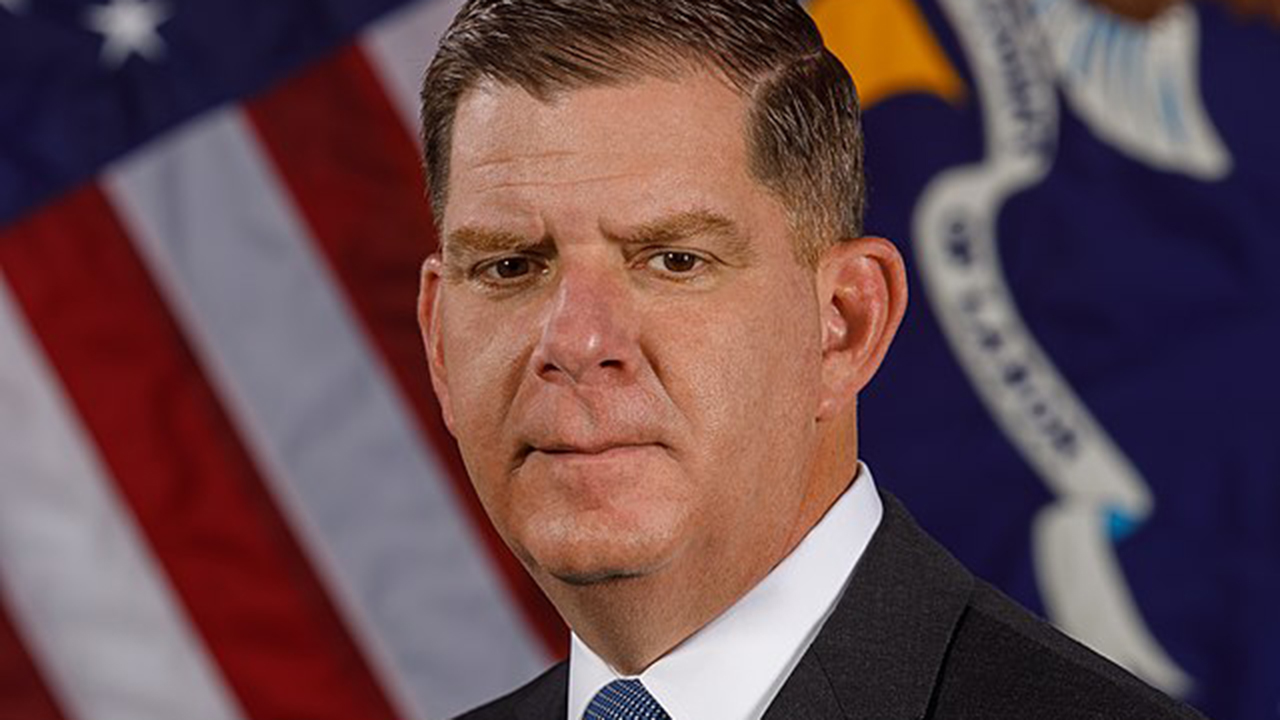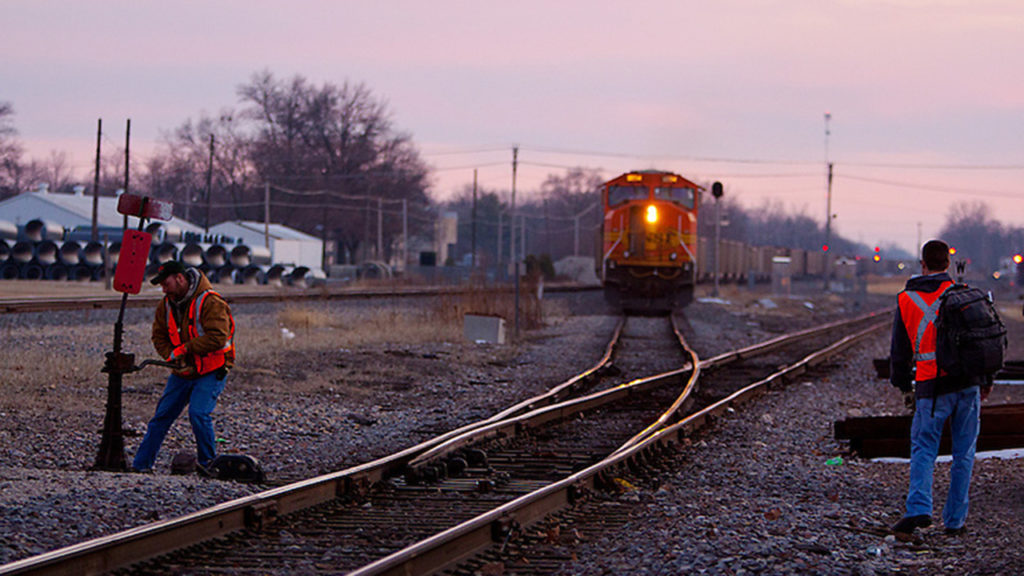
U.S. Labor Secretary Walsh to Step Down in Mid-March
Written by Marybeth Luczak, Executive Editor
U.S. Labor Secretary Martin J. Walsh. Photo: Department of Labor/Shawn T Moore.
U.S. Labor Secretary Martin J. Walsh, who in September led an all-night bargaining session between three rail unions and the National Carriers Conference Committee to avert a nationwide work stoppage, has announced that he will leave his post in Mid-March to become Executive Director of the National Hockey League Players’ Association (NHLPA).
“Earlier this week I met with @POTUS [President Joe Biden] and he accepted that my time as Labor Secretary will conclude mid-March,” Walsh, 55, reported in a series of Tweets on Feb. 16. “As a second-generation card-carrying union member, serving as your Secretary of Labor in the most pro-worker administration in our history is an immense privilege.
“I am forever grateful to @POTUS not only for the faith he placed in me but for his steady, transformative & historic leadership on behalf of working people everywhere.
“I am proud of the work @USDOL [the U.S. Department of Labor] and the rest of the administration has gotten done over the last two years.
“We have been there for workers through a global pandemic and historic recovery. We empowered workers to organize and strengthened protections workers depend on.
“My life has been defined by second chances, and our work delivered second chances to millions of people.
“I’ve met with workers at their workplaces, in union halls and on a picket line. I’ve spent long nights with labor and management to get to solutions. We brought high-quality, equitable job training and career pathways to more workers and across more industries.
“I would be remiss if I did not also acknowledge the exceptional work and support of my partner in this endeavor, Deputy Secretary Julie Su.
“With the kind of leadership assembled across @USDOL, I am confident there will be continuity and the work will be sustained.
“I leave @USDOL with a deeper understanding of why working people are the heart and soul and strength of our nation. I believe in the promise and resilience of our nation now more than ever.
“Thank you for everything.”
Walsh was sworn in as the 29th Secretary of Labor on March 23, 2021, and he becomes the first secretary to depart President Biden’s cabinet. A former Boston mayor and Massachusetts House member, he followed in his father’s footsteps to join the Laborers Local 223 in Boston at age 21 and rose to the presidency. In 2011, Walsh was appointed as the head of Boston’s Building and Construction Trades Council, where he worked with business and community leaders to promote high-quality development, and created a program called Building Pathways that has become a model for increasing diversity in the workplace and providing good career opportunities for women and people of color, according to the U.S. Department of Labor. Walsh left that position in 2013 to make his first run for Boston mayor.
Walsh next month will succeed Don Fehr at the NHL Players’ Association; Fehr has held the job since Dec. 18, 2010.
In a Feb. 16 statement released by the association, Walsh said he was “honored to have been selected as the Executive Director of the NHLPA. In accepting this offer I am committing to do all that I can to advocate on players’ behalf. My years of experience in the labor movement and in public life has taught me that the job is never about me. It’s about us. It’s about the people we serve. So I look forward to working with players and the NHLPA staff to make the NHLPA the best and most effective team we can be to advance and protect the interests of our players and their families.”
Walsh’s Work With Rail

At the President’s behest, Walsh ordered a bargaining session between the rail unions and NCCC that led to the Sept. 15 tentative agreement. As Railway Age Capitol Hill Contributing Editor Frank N. Wilner wrote at that time, “Walsh locked horns with the negotiating teams of the NCCC, the Brotherhood of Locomotive Engineers and Trainmen (BLET); the Transportation Division of the International Association of Sheet Metal, Air, Rail and Transportation Workers (SMART-TD); and the Brotherhood of Railroad Signalmen (BRS). The labor side steadfastly insisted that their members, who operate most of the nation’s freight trains and maintain the signal systems, would not ratify a tentative agreement that did not include improvements in health care benefits, including sick leave.
“Around midnight [on Sept. 15], the NCCC backed-off its insistence that it would not budge from non-binding recommendations made some 30 days ago by a Joe Biden-appointed Presidential Emergency Board. For the next five hours, Walsh worked both sides of the negotiating table to extract compromise from both sides on the sweeteners. … Rail and labor negotiators left the Labor Department offices just after 5 a.m. Sept. 15, with Biden shortly afterward making the official announcement of the tentative agreement. Biden called it ‘an important win for our economy and the American people.’ The Association of American Railroads had warned that a nationwide rail shutdown would have cost the American economy some $2 billion daily as some 40% of intercity freight move by rail—much of it essential to keeping factory floors and assembly lines operating.”
The House on Nov. 30 had passed two resolutions (H.J. Res. 100 and H.Con. Res. 119) to impose on four holdout rail unions the tentative agreement accepted by eight others, and to amend that tentative agreement to include seven days of paid sick leave (that unions couldn’t gain in collective bargaining), but the Senate on Dec. 1 agreed only to impose the tentative agreement. The House-passed paid sick leave resolution was defeated by not achieving a 60-vote threshold to avoid a filibuster.



